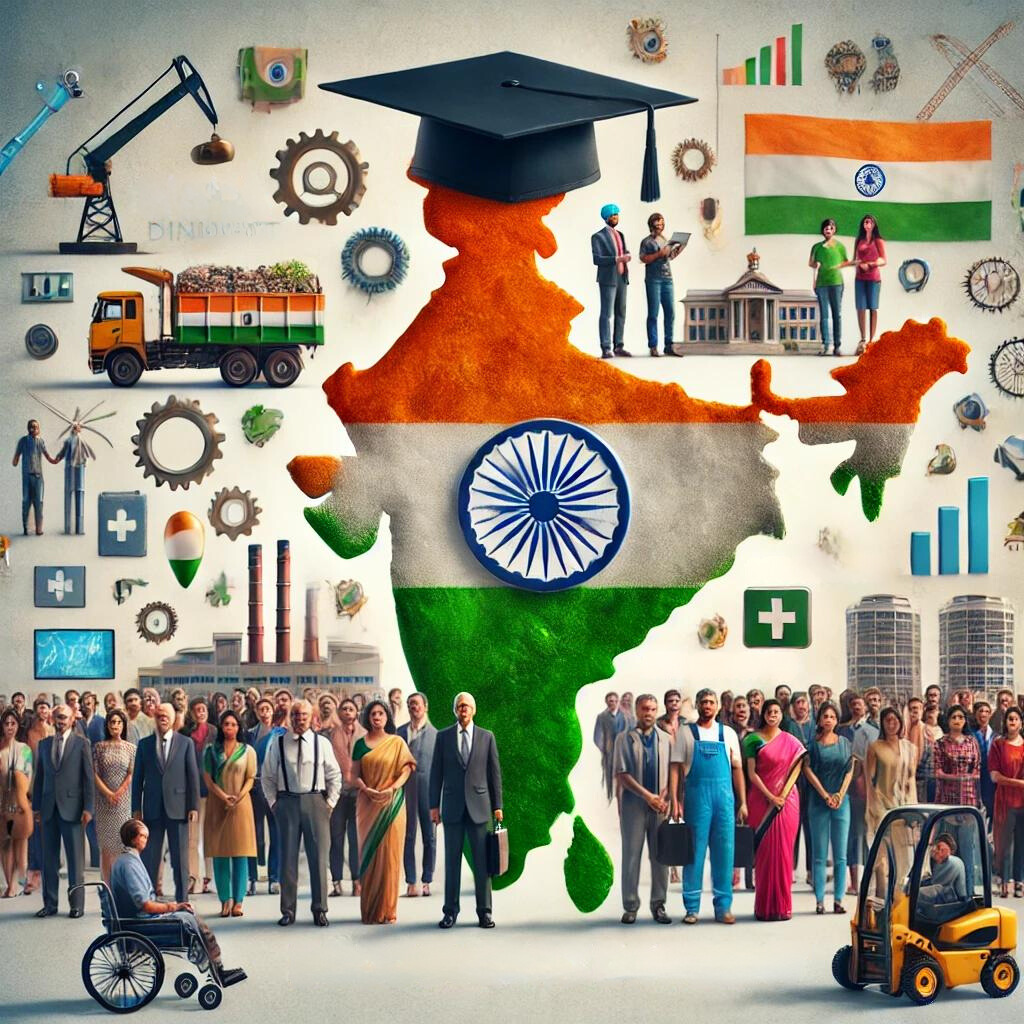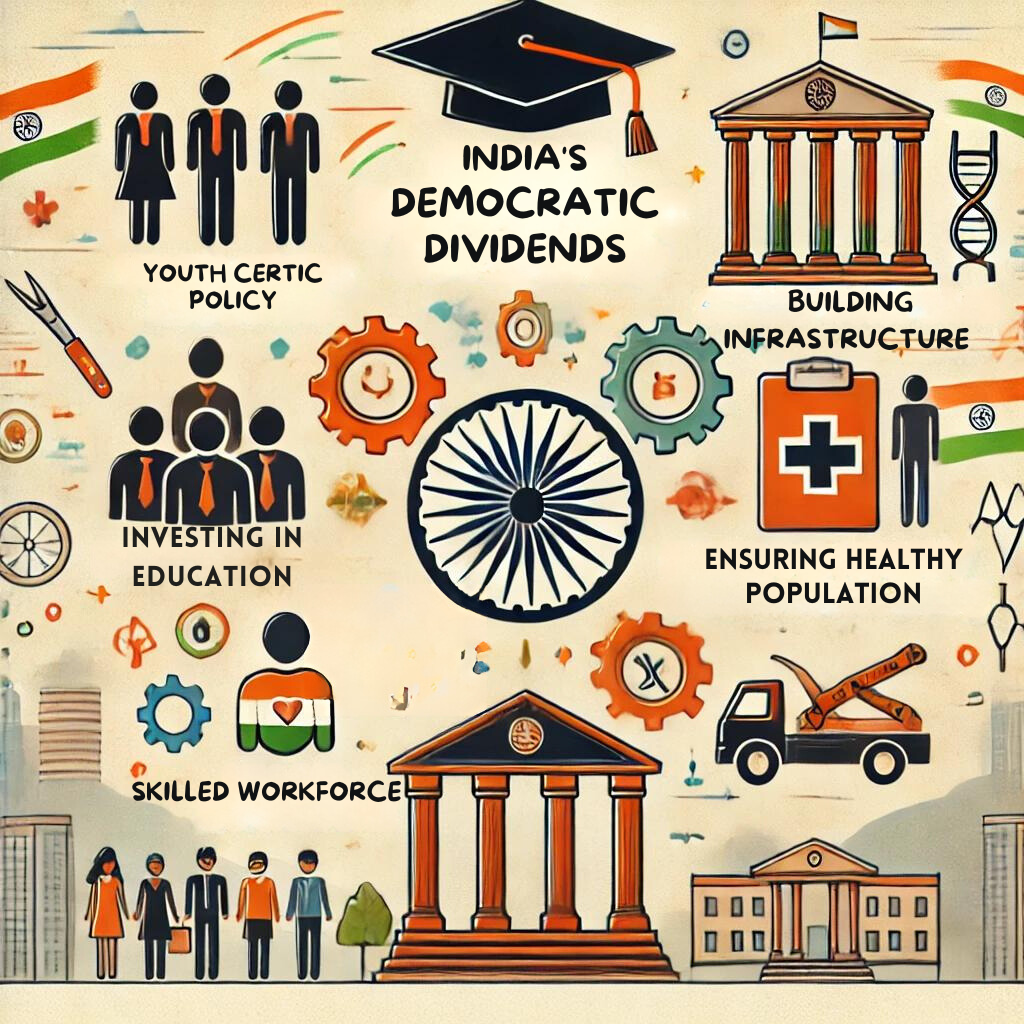India’s Demographic Journey
India’s demographic journey has been marked by significant milestones and challenges. The country is currently experiencing a demographic dividend, with a large portion of its population in the working-age group. However, to fully harness this potential, it is crucial to address issues related to education, employment, healthcare, and infrastructure. Effective policies and interventions are needed to transform this demographic advantage into sustainable economic growth and development.
Origin of the Article
This editorial is based on “India’s demographic journey of hits and misses” published in The Hindu on 11/07/2024. The article discusses India’s progress towards the Sustainable Development Goals (SDGs) and the importance of understanding population dynamics.
Relevancy for UPSC Students
Understanding the demographic dividend is essential for UPSC aspirants as it relates to various topics in the syllabus, including human resource development, skill development, and inclusive growth. Mastering this topic will enhance your ability to effectively address questions on economic development and government policies.

Why in News
The article’s emphasis on India’s demographic journey is particularly crucial for UPSC aspirants as it directly relates to topics frequently covered in the exam, such as demographic dividends and government policies on education, employment, and healthcare. Understanding this subject helps in answering questions about strategic measures needed to harness India’s youthful population, as seen in previous years’ questions on demographic dividends and employment rates.
India’s Demographic Journey
India’s demographic evolution since 1989 has been a pivotal factor in its path toward achieving the Sustainable Development Goals (SDGs). The establishment of World Population Day in 1989 underscored global concerns about population growth. Paul Ralph Ehrlich’s “The Population Bomb” highlighted these issues, but India’s Green Revolution significantly boosted its food production capacity. As India progresses towards the SDGs by 2030, effective population management remains crucial.
- Historical Context: In 1989, the UN established World Population Day, reflecting concerns initially voiced by Paul Ralph Ehrlich in “The Population Bomb” about the challenges of feeding an expanding population.
- Green Revolution Impact: The Green Revolution dramatically improved India’s food production, alleviating fears of widespread hunger and demonstrating the potential for agricultural advancements.
- Progress Towards SDGs: India’s strides in managing its population dynamics have been instrumental in its journey towards achieving the SDGs by 2030, ensuring sustainable development.
Demographic Dividend
The demographic dividend in India refers to the economic growth potential arising from a favorable age structure, where the working-age population is larger than the dependent population. For India, this phase began in 2005–06 and is expected to last until 2055–56. With 68% of its population between ages 15 and 64, India stands to gain significantly from this demographic shift.
- India’s Demographic Window: India entered the demographic dividend phase in 2005-06, which will continue until 2055-56.
- Population Statistics: Approximately 68% of Indians are between 15 and 64 years old, with a median age of 28.4 years.
- Global Workforce Contribution: By 2030, India will have 1.04 billion working-age individuals, contributing significantly to the global workforce.
Unleashing Demographic Dividend in India
India is leveraging its demographic dividend through strategic policies and initiatives focused on youth, education, skill development, healthcare, and infrastructure. These efforts aim to harness the potential of its young population for sustainable economic growth.
- Youth Centric Policy: Initiatives like the National Youth Policy-2014 and Pradhan Mantri Kaushal Vikas Yojana cater to the aspirations of India’s young population.
- Investing in Education: Schemes like Sarva Shiksha Abhiyan (SSA) and the Right to Education (RTE) Act aim to improve literacy and education quality.
- Skilled Workforce: Programs such as Pradhan Mantri Kaushal Vikas Yojana (PMKVY) and Rozgar Mela focus on skilling and upskilling the workforce.
- Ensuring Healthy Population: Initiatives like Aayushmaan Bharat Yojana and Digital Health Mission aim to improve healthcare and ensure a healthy population.
- Building Infrastructure: Projects like the Digital India program and PM Gati Shakti Scheme enhance infrastructure, supporting economic growth.

Factors Leading to Demographic Disaster
Challenges such as high unemployment, an aging population, resource scarcity, low living standards, and unplanned urbanization could hinder India’s demographic dividend. Addressing these issues is crucial for maximizing the potential benefits of the demographic shift.
- High Unemployment Rate: The growing labor force faces significant unemployment, with youth participation in economic activities declining.
- Aging Population: The rapidly growing elderly population presents challenges in healthcare and social security.
- Resource Scarcity: Rapid population growth strains resources like water, leading to issues like water stress in major cities.
- Low Living Standard: High population growth impacts public expenditures on social sectors, reducing the quality of life.
- Unplanned Urbanisation: Rapid urbanization leads to overburdened infrastructure, housing challenges, and environmental degradation.
PESTEL Analysis
| Political: India’s political landscape supports a demographic dividend with initiatives like the National Youth Policy and Aayushmaan Bharat Yojana. These policies aim to uplift youth and ensure a healthy population, critical for leveraging human capital. However, policy implementation and governance consistency remain challenges. Economic: India is poised for economic growth as it capitalizes on its youthful population. Programs like PMKVY and Rozgar Mela focus on skilling the workforce, essential for economic prosperity. However, high unemployment rates and low employability among graduates could undermine economic benefits. Social: Social programs like Beti Bachao Beti Padhao and Mission Indradhanush are geared towards improving living standards and healthcare. Yet, challenges such as aging population, resource scarcity, and unplanned urbanization pose significant threats to social stability. Technological: The Digital India Programme and other digital initiatives aim to enhance infrastructure, which is vital for economic growth and effective utilization of the demographic dividend. These efforts are crucial in bridging the digital divide and enhancing connectivity across the country. Environmental: Environmental concerns such as water scarcity impact India’s ability to sustain its large population. Effective management of natural resources is crucial as cities like Delhi and Bangalore face severe water stress, impacting living conditions and health. Legal: Legal frameworks supporting education and employment, like the Right to Education Act, are instrumental in harnessing the demographic dividend. However, India needs to strengthen its legal systems to ensure inclusive growth and address issues like gender inequality and labor rights more effectively. |
Strategic Measures for Reaping Demographic Dividends
India must implement strategic measures in education, employment, healthcare, and infrastructure to maximize its demographic potential. Policies should focus on enhancing education quality, generating employment, improving healthcare, and ensuring inclusive growth.
- Education and Skills Development: Improve education accessibility and quality, promote vocational training, and invest in digital literacy.
- Employment Generation: Foster a business-friendly environment, support startups, and ensure social security for gig workers.
- Healthcare and Well-being: Strengthen healthcare infrastructure, focus on preventive measures, and promote mental health awareness.
- Inclusion Growth and Gender Equality: Implement policies for gender equality, enhance social cohesion, and increase female workforce participation.
- Infrastructure Development: Invest in transport, energy, digital connectivity, and sustainable urban planning.
- Shifting from Agriculture to Formal Sector: Move the workforce from agriculture to formal employment to address disguised unemployment.
- Policy and Governance: Formulate comprehensive policies, strengthen governance mechanisms, and foster collaboration between sectors.
Conclusion
In conclusion, India’s journey from a demographic disaster to a demographic dividend is laden with both challenges and opportunities. Effective policies in education, healthcare, employment, and infrastructure are pivotal to harnessing the potential of the youthful population. As future civil servants, understanding these dynamics is crucial for creating sustainable solutions and steering India towards inclusive growth and prosperity.
| UPSC Civil Services Examination, Previous Year Questions (PYQs) Mains Q. Discuss the potential of demographic dividend in India in light of Government’s policies on health, education, and skill development. (GS Paper III, 2015). Q. Analyze the role of initiatives like Digital India Programme, PM Gati Shakti Scheme, and Bharatmala Scheme in transforming India’s infrastructure landscape to support sustainable economic growth. |

